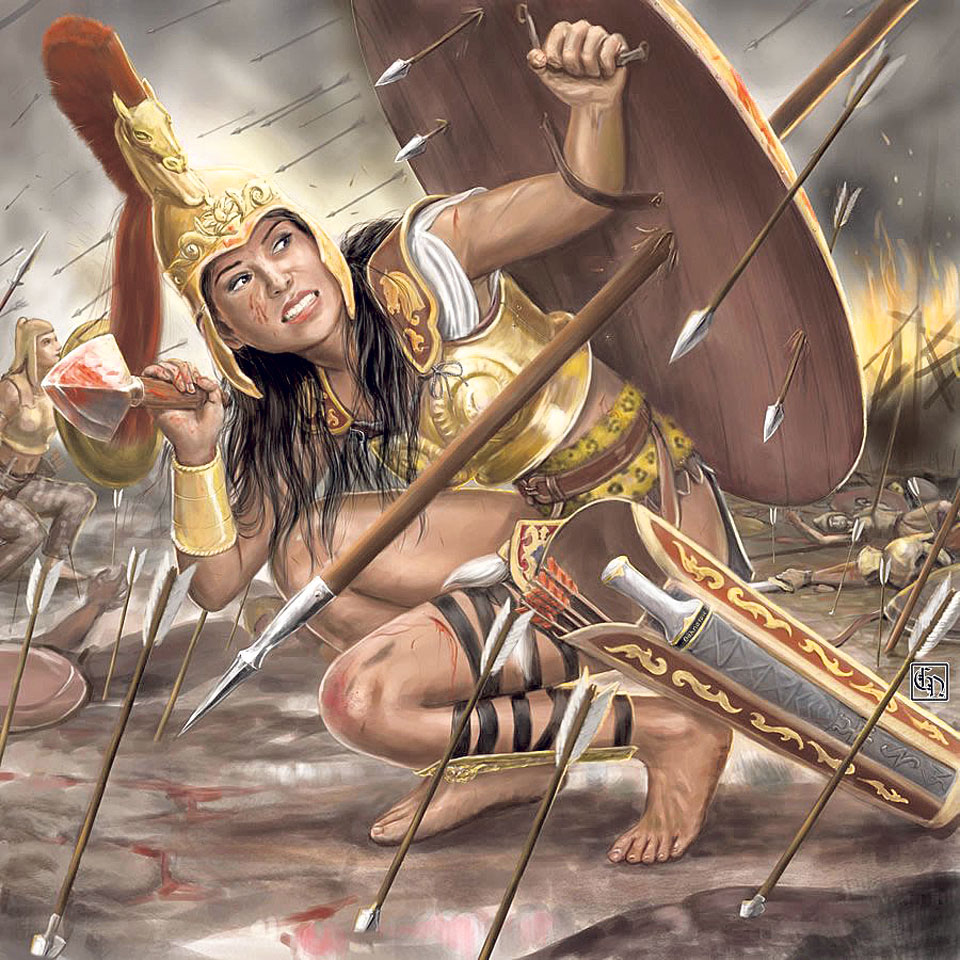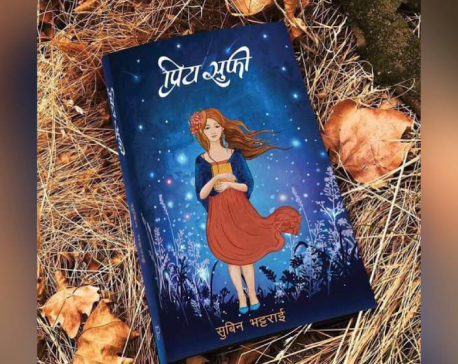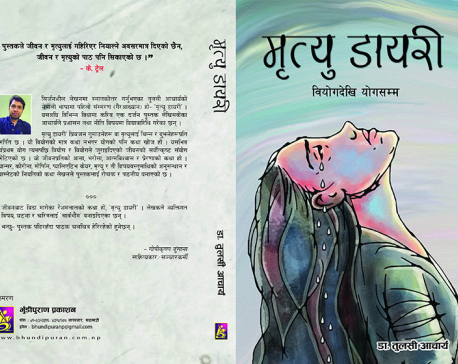
OR

Over the course of mankind’s existence, folklores, epics, and sagas have seen emergence as men have transcended tangible and intangible boundaries to reset preconceived notions of potential. And well deservedly, they have been sung of their valor and virtues by minstrels and poets over the centuries. Lesser known though are the counterparts of these men, the ladies, who have been masked in shadows and, although preserved in stories, not acknowledged or heralded enough. Most often though, they are figures of reverence for what they represent.
Throughout time mankind has witnessed the good and the bad, the nice and the evil, the brave and the coward. But in times of need it has also seen the birth of heroes, the silent ones and the loud ones. And these aren’t just the gentlemen but also the gentleladies. Their strength is, at times, quite and resolute, sacrificial and devoted or just fierce and forceful, but strength nevertheless. So here we take a moment to shed some spotlight on four groups of women who symbolize courage, bravery, and traditions.
Panchakanya
Literally “The Five Virgins”, are a quintet of iconic female characters from the Hindu mythology comprised of Ahalya, Draupadi, Kunti, Tara, and Mandodari. They stand as paragon symbols of virtue and chastity that might strike some as ironic since all these women are noted for their associations with multiple men. Ahalya, conceived as the most beautiful woman on earth by Brahma, was cursed for her infidelity with Lord Indra by her spouse Rishi Gautama. Draupadi, wife of the five Pandavas, is a representative figure of polyandry. Kunti, an epic heroine in the Mahabharat, birthed children not off her husband but off other men, Tara (wife of Sugreeva) and Mandodari (wife of Ravana) wed the brothers of their dethroned husbands. So what is it that make these women such ideal figures whose names when chanted in hymns is said to dispel sins? These women aren’t held ideals for their virginal status. They are revered for what they stand for. Ahalya is an ideal for repentance from sin, Draupadi was the early proto-feminist whose role in the war of Kurukshetra was hugely significant, Kunti is a figure for boundless maternal love who fiercely protected her children and taught them to honor what is right, and Tara and Mandodari made attempts to dissuade their husbands against taking actions that would be sure to cause their downfall. They are women who put “satya” before their matrimonial duties and refused to be blindsided from their beliefs.
The Vestal Virgins
The story of the Vestal Virgins originates from the ancient Rome. They were priestesses of Vesta, the goddess of hearth. They are one of the most prominent cults in the ancient European history. The Vestals were chosen among the elite families of ancient Greece and each family considered it an honor for their daughters to be chosen as Vestals. At varying times the College of Vestals, inhabited four to six Vestals, all of whom were sworn to vows of chastity and virginity. The Vestals were excused of societal obligations of marriage and bearing children and took a 30-year-long pledge of devotion to correct observance of state rituals. Their service entitled them to salaries from the royal treasury, an unprecedented event since the ancient Romans denied women the rights to their own earnings. The primary duty of the Vestals was to stand vigil to the flame of Vesta, to keep its flames alight for eternity since the flame represented Rome’s influence in the world as a supreme power. Although the Vestals lived their lives in constrictions they were figures of great reverence in ancient Rome since they represented Rome’s purity and honor.
The Amazons (Yes, Wonder Woman!)
The Greek mythology chronicles some legendary heroes, who need no more mentioning, however the mythology also mentions a tribe of all-women warriors who were progenies of Ares, the god of war and Harmonia, a wood nymph. They were the Amazons. They were formidable, aggressive, and lethal warriors. These women incited fear among warriors from the Middle East, East Asia, and Mediterranean regions. They fought in the legendary Trojan war and their grand army invaded Athens. They fought as equals with the mighty Heracles (also Hercules in Roman mythology), Achilles and Theseus. Their battle scenes are chronicled on the Parthenon in the Athenian Acropolis, their paintings and sculptures were erected all throughout the streets of Greece. The average Amazon stood 5’6” tall which was a rather curious anomaly and recent archaeological discoveries have unearthed skeletons of what are considered to be the Amazons. These skeletons indicate battle injuries: crushed skulls, ribs slashed by swords and arrows lodged in bones. They really were the wonder women of ancient times.
Onna-bugeisha
Samurais are warriors recognized for their deft and lethal fighting. But fighting alongside them were the Onna Bugeisha, a type of female warriors belonging to the Japanese nobility. Since before the introduction of the samurai class, the Japanese were skilled fighters who could wield swords and spears expertly. Their women too were well versed in the art of tantojutsu in battle and learned to use naginata (a especially designed weapon for women to complement their small build) and kaiken (a double edged blade with length of up to 10 inches). This was to substitute fighters in communities that lacked male fighters. A notable Onna Bugeisha is Empress Jingu (169-269 AD), a Japanese empress who inspired social and economic changes during her reign. She’s also noted for her successful invasion into the Korean peninsula in the year 200 AD. The Onna Bugeisha safeguarded homes from marauders around villages, opened schools all around the Japanese Empire with the aim of training young girls to become skilled fighters and were teachers of science, mathematics, and literature.
You May Like This

Life is never too pointless to be ended
"Priye Sufi," a book by Nepali author Subin Bhattarai, is a moving and consoling book. The story's primary lesson is... Read More...

'ULFA: The Mirage of Dawn’ offers a remarkably balanced narration on history of ULFA
Rajeev Bhattacharyya’s book offers a remarkable history of ULFA, its formation and rise to prominence, the interplay of its principal... Read More...

Mrityu Diary: A must read book about life and death
"Mrityu Diary" or the “Death Diary” is a book written by the author Tulasi Acharya, which is currently available in... Read More...



Just In
- World Malaria Day: Foreign returnees more susceptible to the vector-borne disease
- MoEST seeks EC’s help in identifying teachers linked to political parties
- 70 community and national forests affected by fire in Parbat till Wednesday
- NEPSE loses 3.24 points, while daily turnover inclines to Rs 2.36 billion
- Pak Embassy awards scholarships to 180 Nepali students
- President Paudel approves mobilization of army personnel for by-elections security
- Bhajang and Ilam by-elections: 69 polling stations classified as ‘highly sensitive’
- Karnali CM Kandel secures vote of confidence















Leave A Comment